Structure-Function Analysis of a Mixed-linkage β-Glucanase/Xyloglucanase from the Key Ruminal Bacteroidetes Prevotella bryantii B(1)4
- PMID: 26507654
- PMCID: PMC4714200
- DOI: 10.1074/jbc.M115.691659
Structure-Function Analysis of a Mixed-linkage β-Glucanase/Xyloglucanase from the Key Ruminal Bacteroidetes Prevotella bryantii B(1)4
Abstract
The recent classification of glycoside hydrolase family 5 (GH5) members into subfamilies enhances the prediction of substrate specificity by phylogenetic analysis. However, the small number of well characterized members is a current limitation to understanding the molecular basis of the diverse specificity observed across individual GH5 subfamilies. GH5 subfamily 4 (GH5_4) is one of the largest, with known activities comprising (carboxymethyl)cellulases, mixed-linkage endo-glucanases, and endo-xyloglucanases. Through detailed structure-function analysis, we have revisited the characterization of a classic GH5_4 carboxymethylcellulase, PbGH5A (also known as Orf4, carboxymethylcellulase, and Cel5A), from the symbiotic rumen Bacteroidetes Prevotella bryantii B14. We demonstrate that carboxymethylcellulose and phosphoric acid-swollen cellulose are in fact relatively poor substrates for PbGH5A, which instead exhibits clear primary specificity for the plant storage and cell wall polysaccharide, mixed-linkage β-glucan. Significant activity toward the plant cell wall polysaccharide xyloglucan was also observed. Determination of PbGH5A crystal structures in the apo-form and in complex with (xylo)glucan oligosaccharides and an active-site affinity label, together with detailed kinetic analysis using a variety of well defined oligosaccharide substrates, revealed the structural determinants of polysaccharide substrate specificity. In particular, this analysis highlighted the PbGH5A active-site motifs that engender predominant mixed-linkage endo-glucanase activity vis à vis predominant endo-xyloglucanases in GH5_4. However the detailed phylogenetic analysis of GH5_4 members did not delineate particular clades of enzymes sharing these sequence motifs; the phylogeny was instead dominated by bacterial taxonomy. Nonetheless, our results provide key enzyme functional and structural reference data for future bioinformatics analyses of (meta)genomes to elucidate the biology of complex gut ecosystems.
Keywords: Bacteroidetes; affinity labeling; carbohydrate chemistry; enzyme inhibitor; enzyme kinetics; microbiome; plant cell wall; polysaccharide; structural biology; structure-function.
© 2016 by The American Society for Biochemistry and Molecular Biology, Inc.
Figures

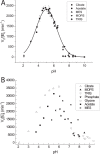
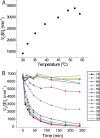
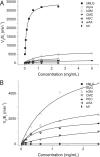
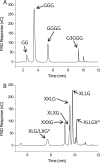
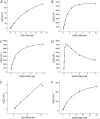
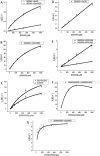



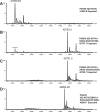
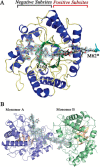
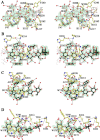

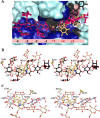
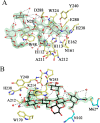

References
-
- Albersheim P., Darvill A., Roberts K., Sederoff R., and Staehelin A. (2010) Plant Cell Walls, pp. 1–363, Garland Science, New York
-
- Fry S. C. (1989) The structure and functions of xyloglucan. J. Exp. Bot. 40, 1–11
-
- Hayashi T. (1989) Xyloglucans in the primary cell wall. Annu. Rev. Plant Physiol. Plant Mol. Biol. 40, 139–168
-
- Fry S. C., Nesselrode B. H., Miller J. G., and Mewburn B. R. (2008) Mixed-linkage (1→3,1→4)-β-d-glucan is a major hemicellulose of Equisetum (horsetail) cell walls. New Phytologist 179, 104–115 - PubMed
Publication types
MeSH terms
Substances
Associated data
- Actions
- Actions
- Actions
- Actions
- Actions
- Actions
- Actions
- Actions
- Actions
- Actions
- Actions
- Actions
- Actions
Grants and funding
LinkOut - more resources
Full Text Sources

